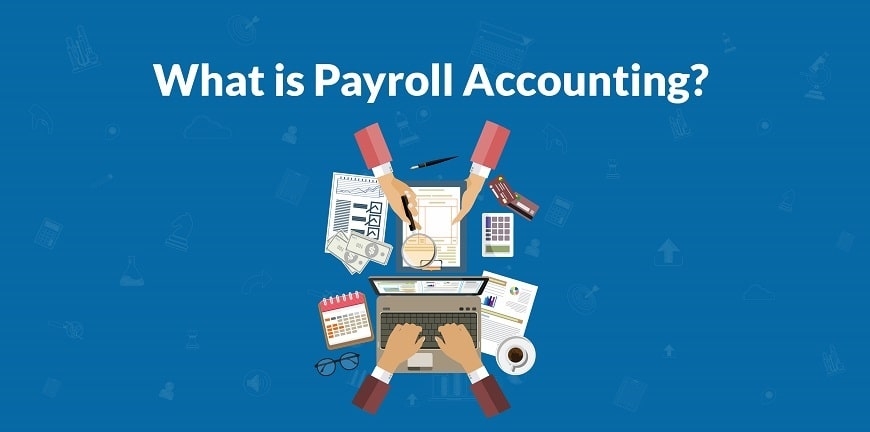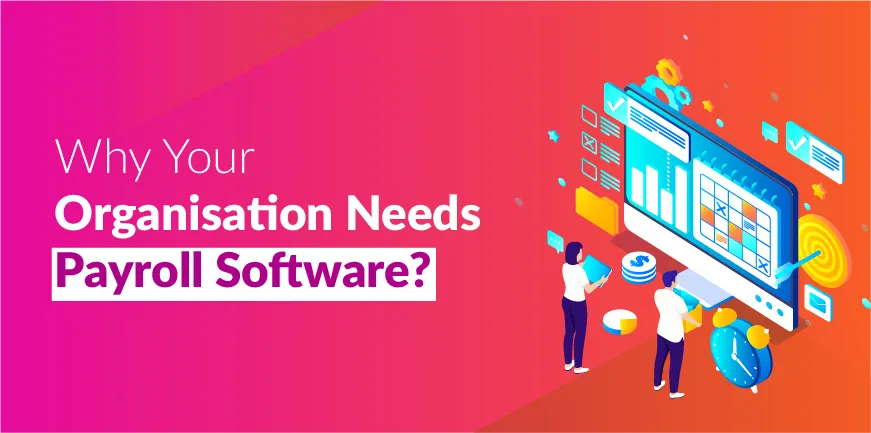
10 Latest Performance Appraisal Trends in 2025
25/09/2025
AI and the 2025 Job Market: Sectors and Skills Most Affected
30/09/2025- What is Payroll Migration?
- Common Pain Points that Lead to Payroll Migration
- Why Payroll Migration is Vital for Businesses?
- Payroll Migration Checklist: Step-by-Step Process
- 5 Key Challenges in Payroll Migration
- 5 Best Practices for a Smooth Payroll Migration
- Are You Looking for a Payroll Solutions Partner?
- Conclusion
- Key Takeaways
- Frequently Asked Questions (FAQs)
Operational excellence begins with accurate processes; payroll accuracy is the backbone of employee trust.”- Indra Nooyi, Former CEO, PepsiCo.
Is your current payroll system providing the desired outcomes? Are you looking to upgrade your manual payroll processes to an automated one?
Payroll has transformed from a salary disbursal and tax management process to a robust tool for boosting employee satisfaction and brand value. For companies to stay competitive in this dynamic business market, making continuous improvements in every operation is the only way forward.
If the existing payroll system is suffering from high errors, delays, compliance violations, etc., then it’s time to regroup and initiate the payroll transition process for better results.
In this detailed discussion, we will provide an actionable checklist and insights that will help you get started with payroll migration and make the entire process seamless and flawless.
What is Payroll Migration?
Payroll migration is a systematic yet tricky process of transferring end-to-end payroll operations from one payroll service provider to another for better outcomes. The payroll data migration can be very arduous, especially when operations are carried out on a global scale.
However, with the right attitude & approach, the entire payroll transition process can be executed seamlessly and accomplished within the prescribed deadlines.
Nearly 78% of Indian companies are embracing payroll transfer from legacy systems to automated cloud-based payroll solutions. This calculated move can reduce payroll errors, speed up salary disbursement, improve tax compliance, and offer real-time insights to initiate process changes.
Here is a hypothetical example that sheds light on why the payroll migration becomes necessary.
A rapidly expanding IT services firm in Bangalore was grappling with manual payroll processing for its 2,000 employees across multiple jurisdictions. With varying state-specific labour laws, PF/ESIC regulations, & frequent overtime calculations, payroll errors were becoming a serious concern. This led to delayed salary disbursements, resulting in reduced employee satisfaction and high non-compliance violations.
To combat these challenges, the company took a firm decision to undergo a payroll transition process from in-house to a cloud-based outsourced solution offered by top payroll agencies like Alp Consulting. The new system automated statutory compliance, centralized multi-state payroll processing, & deployed real-time dashboards for HR & finance teams.
Within 3 months, payroll errors dropped by a whopping 90%, compliance reporting became seamless, & HR could focus on strategic initiatives instead of manual calculations.
Common Pain Points that Lead to Payroll Migration
Here are 7 pain points that force companies to undergo payroll migration:
1. Manual Errors
Frequent mishaps in salary computations, overtime, & statutory deductions can trigger delays in salary credits, employee dissatisfaction, & compliance risks.
2. Complex Multi-State Compliance
Different state labour laws, PF/ESIC guidelines, & TDS regulations create a conundrum & elevate the risk of non-compliance.
3. Inefficient Processes
Time-consuming spreadsheets & legacy systems shoot up HR workload & reduce operational efficiency.
4. Scalability Challenges
Expanding workforce across locations and projects makes managing payroll in-house or with legacy systems cumbersome.
5. Delayed Reporting & Insights
Lack of real-time payroll dashboards hinders financial planning, auditing, & decision-making.
6. Data Security Concerns
Insufficient protection of sensitive employee salary & personal information elevates the risk of breaches & penalties.
7. Integration Issues
Difficulty syncing payroll with attendance, leave, performance, and accounting systems creates inconsistencies and administrative headaches.
Why Payroll Migration is Vital for Businesses?
In today’s fast-paced business arena, accurate, timely, & compliant payroll is paramount. Companies are experiencing growing workforce complexity, multi-state regulations, & manual errors, making payroll migration a strategic necessity.
Payroll transition process isn’t just about technology: it directly impacts compliance, employee satisfaction, operational efficiency, & business scalability. Here are 5 reasons that shed light on the importance of payroll migration:
1. Enhances Accuracy & Reduces Errors
Payroll accuracy is paramount for maintaining employee trust & negating disputes. Manual processing through legacy systems often leads to salary miscalculations, overtime errors, or incorrect deductions.
Nearly 41% of companies report payroll errors annually, leading to salary delays and compliance issues as per the Deloitte India Human Capital Trends Report.
Example: A manufacturing firm with nearly 5,000 employees can cut payroll errors by nearly 80% after migrating from manual payroll to a cloud-driven automated payroll system.
2. Ensures Compliance with Regulations
Compliance can’t be compromised at any point in time in payroll. Additionally, companies must handle PF, ESIC, TDS, & state-specific laws, which change like seasons.
Non-compliance can result in penalties and reputational harm. Nearly 55% of SMEs in India experience problems with payroll compliance, according to the PwC India HR Compliance Report.
Example: A retail company operating in three states can achieve 100% compliance post payroll migration, avoiding penalties & audit risks.
3. Improves Operational Efficiency
Payroll transfer helps organizations save time & effort. Additionally, payroll automation reduces repetitive manual tasks, empowering HR teams to focus on strategic business functions like talent management & workforce planning. According to studies, HR teams are currently spending 20% of their time on manual payroll, limiting focus on strategic initiatives.
Example: An e-commerce firm can free up its HR bandwidth for talent development after automating payroll, cutting processing time by 50%.
4. Supports Scalability and Growth
As businesses expand, managing diverse workforces across projects and states becomes increasingly daunting. Step-by-step payroll migration ensures smooth scalability without increasing administrative burden or compliance risks. Businesses expanding across states report 30% higher payroll complexity without automation or centralized systems.
Example: A construction company can manage 1,500 additional employees across multiple sites seamlessly after payroll migration, ensuring smooth expansion.
5. Strengthens Data Security and Reporting
Payroll involves sensitive employee personal and professional information. Weak manual systems or outdated software put this data at risk. Payroll migration strengthens security while improving visibility via real-time dashboards and reporting. Nearly 60% of companies are experiencing sensitive payroll data exposure due to weak systems or manual processes.
Example: A fintech startup can migrate to a secure cloud platform, ensuring encrypted payroll processing and real-time compliance reporting.
Payroll Migration Checklist: Step-by-Step Process
Payroll migration is a critical step for businesses aiming to streamline processes, ensure compliance, & support growth. With rising workforce complexities and diversification, legacy systems often lead to errors & other complications. A structured payroll migration checklist ensures smoother transitions, minimizes risks, and empowers HR teams with accurate, efficient payroll management. Here is a step-by-step payroll migration process flow that offers the best outcomes.
1. Assess Current Payroll System
We must evaluate existing payroll processes, technology, and compliance gaps. The payroll processing team must identify recurring errors, inefficiencies, or manual dependencies causing salary disbursement delays, compliance penalties, or poor employee experience. Moreover, a thorough system audit ensures clarity on what must be improved before payroll migration commences. This avoids recurrence of similar problems in the migrated payroll system.
2. Define Payroll Migration Objectives
Set clear goals like improved compliance, automation, error reduction, multi-state scalability, or cost savings. Objectives act as measurable benchmarks or KPIs for payroll transition process success. For instance, reducing payroll processing time by 40% or ensuring 100% statutory compliance within the first quarter post payroll migration becomes critical to measure ROI.
3. Consolidate and Validate Employee Data
Collect accurate employee information as a part of payroll data migration, including salary structures, PF/ESIC details, tax declarations, & leave/attendance records. Also, data validation is vital to prevent mismatches. Moreover, incorrect or outdated employee records often cause payroll errors, so cleansing, standardizing, & reconciling this data ensures smooth integration into the new payroll system.
4. Choose the Right Payroll Platform
Select a top-class payroll service provider like Alp Consulting, which offers tailored solutions based on your business size, industry, & compliance needs. Also, look for automation, cloud security, scalability, & statutory compliance features. A platform that offers real-time dashboards, seamless integrations with HR/ERP systems, & region-specific compliance updates ensures long-term payroll accuracy & operational efficiency across multiple jurisdictions.
5. Design Migration Roadmap and Timelines
Create a detailed roadmap with milestones covering data transfer, system configuration, testing, & go-live. Also, set realistic timelines that minimize payroll cycle disruptions. For example, plan payroll migration during a non-critical pay cycle to minimise employee impact and allow teams to resolve issues before scaling fully.
6. Run Parallel Payroll Testing
Before going live with the new migrated payroll system, conduct at least two parallel payroll runs using both old and new systems. Also, compare outputs for accuracy in salaries, deductions, tax calculations, & compliance. This testing phase helps identify gaps, fine-tune system configurations, & build confidence in the accuracy of migrated payroll.
7. Train HR and Finance Teams
Provide end-to-end training for HR, payroll, and finance staff on payroll transition best practices. Training ensures teams can handle exceptions, audit requests, & generate accurate MIS reports without external dependence. Ongoing support & refresher sessions boost confidence, reduce dependency on vendors, and improve adoption rates.
8. Ensure Compliance Integration
Integrate statutory modules such as PF, ESIC, TDS, PT, & state-specific labour laws. However, payroll migration without compliance mapping increases audit risks. Moreover, automated compliance updates & regulatory reporting within the system safeguard against penalties, enhance trust, & help businesses stay aligned with evolving labour regulations in India.
9. Go-Live with Monitoring Support
Roll out the new payroll system with real-time monitoring for the first 2–3 cycles. Ensure salary disbursements, tax filings, and compliance reporting run smoothly. Establish dedicated support channels for issue resolution. Close monitoring during this phase minimizes disruptions and builds trust among employees through accurate, timely payouts.
10. Review, Audit, and Optimize Continuously
Post-migration, conduct periodic audits to assess payroll accuracy, compliance adherence, & system efficiency. Solicit employee feedback to pinpoint issues like salary slips, leave tracking, or tax queries. Use insights gathered from the automated payroll system to optimize processes, add new features, and ensure payroll continues to support business scalability and compliance needs.
5 Key Challenges in Payroll Migration
Here are 5 key payroll migration challenges faced by most companies looking to implement a payroll transition process:
1. Data Inaccuracy and Inconsistencies
Payroll data migration often fails due to incomplete, outdated, or inconsistent employee data. Additionally, errors in salary structures, tax declarations, or compliance details can disrupt payroll accuracy & delay seamless system transition.
2. Compliance and Statutory Risks
Payroll migration without mapping PF, ESIC, TDS, and state-specific rules increases compliance risks. Also, failure to align statutory obligations may result in penalties, audits, or legal complications post-implementation.
3. Employee Experience Disruptions
Salary errors, delays, or incorrect deductions during payroll migration directly affect employee trust. Also, even minor payroll mistakes can damage workforce morale & retention, making employee confidence a key migration challenge.
4. Integration with Existing Systems
Payroll must integrate with HR, ERP, & attendance platforms. Poor migration efforts lead to fragmented workflows, duplicate entries, or reporting issues, creating inefficiencies instead of achieving streamlined payroll management.
5. Limited Change Management and Training
HR and finance teams often lack training on cutting-edge payroll systems. Insufficient change management strategies lead to adoption resistance, operational errors, & dependency on external vendors for routine payroll tasks.
5 Best Practices for a Smooth Payroll Migration
Here are 5 payroll transition best practices that companies can adopt to get the best results:
1. Conduct Thorough Data Cleansing
Companies must ensure employee records are accurate, complete, and standardized before payroll migration. Also, clean data prevents payroll errors, ensures smoother integration, & builds a strong foundation for reliable future payroll processing.
2. Align Migration with Compliance Requirements
Map statutory guidelines like PF, ESIC, TDS, and state laws into the payroll migrated system. Also, automated compliance updates help minimize penalties, streamline audits, & maintain regulatory confidence.
3. Run Parallel Payroll Testing
The payroll team must perform multiple payroll runs on both old and new payroll systems. Comparing results validates accuracy, reveals discrepancies, & allows timely corrections before the official system goes live, reducing employee impact.
4. Involve HR and Finance Early
Engage payroll stakeholders during planning, testing, & training. Early involvement improves adoption, empowers teams to handle issues independently, & reduces reliance on external support post-migration.
5. Choose the Right Migration Timeline
Plan payroll migration during a low-activity payroll cycle to prevent disruptions. A carefully chosen timeline minimizes employee impact, ensures contingency preparation, & smoothens the payroll transition process across business operations.
Are You Looking for a Payroll Solutions Partner?
Most companies are still dependent on legacy payroll systems that struggle with compliance updates, manual errors, & limited scalability. As businesses grow, these outdated systems can slow operations, increase risks, and impact employee satisfaction. That’s where payroll migration becomes essential, and the right partner becomes even more important.
Alp Consulting, a leading payroll service provider in India, helps organizations move from legacy systems to smarter, efficient payroll solutions that deliver accuracy and long-term value. By partnering with us, you gain:
- Seamless payroll migration with minimal disruption.
- 100% statutory compliance assurance.
- Advanced technology-driven payroll solutions.
- Data security with robust confidentiality measures.
- Scalable systems to match business growth.
- Dedicated expert support for smooth operations.
Conclusion
Payroll migration is more than just a technical shift: it’s a strategic move to improve compliance, accuracy, and scalability by 10x. This step-by-step payroll migration guide outlines the common challenges, vital steps, & best practices businesses must follow to achieve a seamless transition.
By understanding the why & how of payroll migration, companies can make informed decisions that minimize risks and maximize value. With Alp Consulting as your strategic partner, payroll can evolve from a manual burden into a powerful driver of business efficiency and growth.
Key Takeaways
- Payroll migration reduces errors, improves accuracy, and ensures timely salary disbursement across the entire workforce.
- Automated payroll systems enhance statutory compliance, mitigating risks of penalties, audits, and regulatory non-compliance.
- Streamlined payroll processes free HR teams to focus on strategic initiatives and business growth opportunities.
- Data validation, parallel testing, and structured timelines ensure a smooth transition with minimal disruption.
- Choosing the right payroll partner strengthens security, scalability, reporting, and long-term operational efficiency.
Frequently Asked Questions (FAQs)
1. What is payroll migration?
Payroll migration is the process of transferring payroll operations from one system or provider to another or moving from in-house to a third party for efficiency, compliance, and accuracy.
2. What are the key steps in payroll migration?
Key steps in the payroll transition process include assessing current systems, defining objectives, validating data, selecting platforms, testing, training teams, and ensuring compliance integration.
3. Why do companies need payroll migration?
Companies opt for payroll migration to reduce errors, ensure compliance, improve efficiency, support growth, secure data, and enable real-time reporting.
4. What data is required for payroll migration?
Information required for payroll data migration includes employee details, salary structure, tax declarations, PF/ESIC information, leave/attendance records, and historical payroll transactions.
5. How long does payroll migration take?
Payroll migration typically takes 1–3 months, depending on company size, complexity, number of employees, & multi-state or global operations.
6. What is the difference between payroll migration and payroll outsourcing?
Payroll migration moves payroll to a new system, whereas payroll outsourcing transfers payroll management responsibilities to an external service provider.
7. How do I choose the right payroll migration partner?
Select a partner like Alp Consulting with compliance expertise, proven experience, secure technology, scalability, real-time dashboards, and strong client support.
8. Can small businesses also benefit from payroll migration?
Yes, small businesses benefit from payroll migration through error reduction, automated compliance, time savings, and scalable solutions tailored to growing workforce requirements.
Contact Us For Business Enquiry

Yugandhara V. M
Yugandhara V. M serves as the Assistant Vice President – HRO at Alp Consulting Ltd., bringing over 14 years of rich experience in Human Resource Outsourcing, payroll management, and statutory compliance. He specializes in driving process excellence across HR operations, ensuring seamless service delivery and compliance with labor laws. Yugandhara’s expertise lies in managing large-scale client engagements, optimizing HR processes, and implementing efficient workforce management systems that enhance organizational performance. He also leads comprehensive payroll services, ensuring accuracy, timeliness, and compliance for diverse client portfolios.




